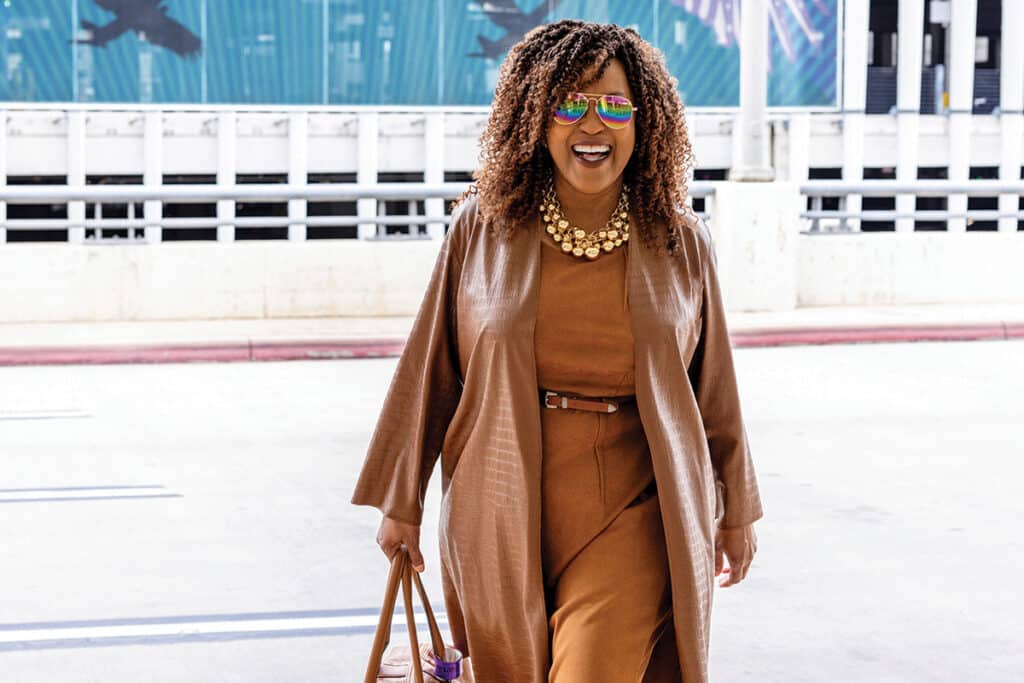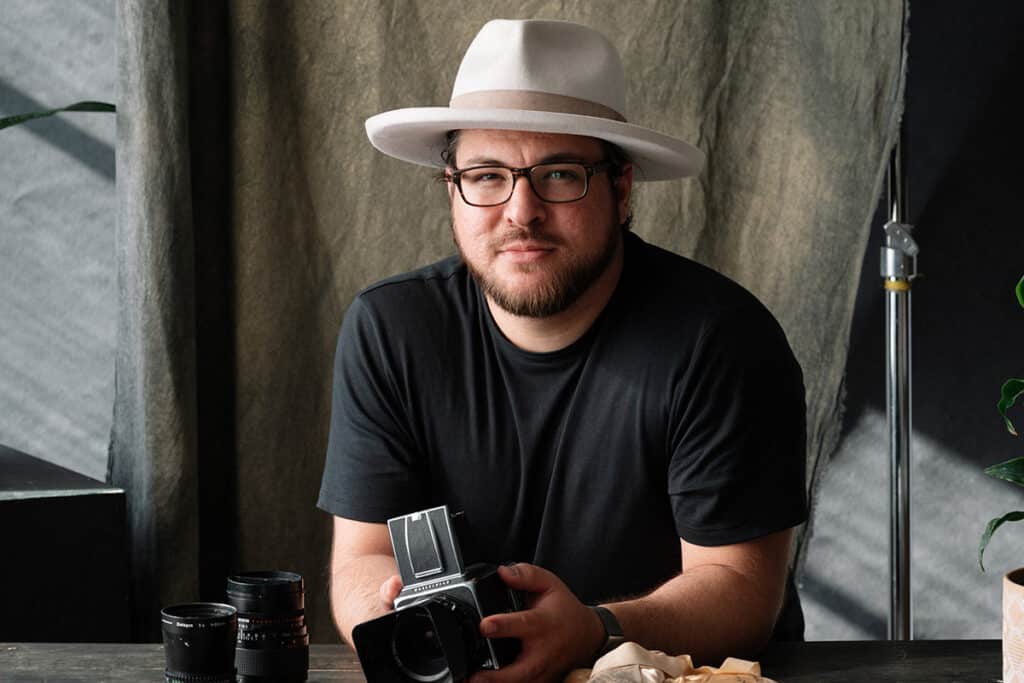Despite the bland appearance of its office-park headquarters, there’s a spicy aroma in the air at MaGi Foods that says something rich and complex is going on there. “Those are the flavors of my life,” says Kathleen Mayes, president of the company she and her husband, Matthew, founded in 2007. No wonder it’s a multifarious blend: As the daughter of a U.S. Foreign Service officer and his Peruvian-born wife, Mayes grew up global as her father’s diplomatic and corporate careers took the family all over the world. Born in Brazil, she got used to moving from one glamorous posting to the next, including Lima, Milan, Athens, Jamaica, Portugal and London. Surprisingly, she says, “It was seamless. Wherever we went, we were enrolled in school and Scouts and joined a church. We were always part of a huge expatriate and local community, and there was always an American Club.” Attending American or international schools, “You’re über-patriotic, you flew your colors proud,” she says. “We celebrated the Fourth of July like John Philip Sousa was living with us,” while enjoying other expats’ traditions of Bastille Day, the English Queen’s Birthday and Scottish Caledonian Day. She also absorbed American values and customs through such diverse sources as Archie comic books and classic films. “In any city, there’s always some small theater where Casablanca is playing,” says Mayes, who “grew up with Cary Grant, Katharine Hepburn and Spencer Tracy.”
During R and R — rest and relaxation — vacations, her family often visited relatives in San Antonio. Except for those few weeks at a time, she says, “I never lived in the United States until I was a sophomore in high school” at Saint Mary’s Hall, which had a boarding program at that time. For college, she chose the University of Texas at Austin and a history major. After graduating from the university’s School of Liberal Arts in 1994, she considered taking the examinations for Civil Service and the Foreign Service, but a hiring freeze at the time made her look elsewhere. For several months, Mayes waited tables and worked at a law firm while searching for a more career-oriented position. “I had student loans, and I was getting job offers that paid only a dollar more an hour than the work I was doing,” she says. “I made the decision that fall to take the GMAT (Graduate Management Admission Test) and apply to graduate school in business.” By that time, her father had retired, and her parents had moved to San Antonio, so when she was accepted by St. Mary’s University, she decided to pursue an MBA degree there while living at home. Used to taking cross-continental moves in stride, Mayes experienced some culture shock as she settled into the study of business. “Coming from history and liberal arts, you’re used to analyzing the past. But in business, you don’t look back, you look forward to determine how to be successful in a crowded marketplace.” In academia, she learned, “You write lengthy papers to prove your points,” while in business, “You write a brief executive summary, and you rely on bullet points.” Businesses, she learned, “tell their story through mathematics,” so she had to learn to analyze numbers and what they tell about profitability and the future of a company.
At St. Mary’s, she met her husband, Matthew Mayes, who had grown up in San Antonio and was earning a dual master’s in business administration and accounting. Although he had attended Churchill High School while she was at Saint Mary’s Hall and had also gone to UT-Austin, they had never met before. They weren’t married at the time she graduated, so she accepted an offer to join the management-training program of the RG Barry Corp., best known for manufacturing a popular brand of slippers. Although the company was headquartered in San Antonio, the program brought many opportunities for international travel. Through the six-month program, Mayes visited the company’s maquiladoras, worked in a distribution plant and visited molding centers. She was offered a job as a corporate planner, working with factories in the Dominican Republic that made components for the company’s products as well as with assembly facilities in China.
After she and her husband, who worked for H-E-B, married in 2000, she says, “I made the decision that was best for our family” when she applied for and accepted a job at Southwestern Bell (later AT&T) in San Antonio. With two female mentors who both had children, she was confident that she could make it work, even after the couple’s elder daughter, Jamie, now age 9, was born. “I went back to work, not knowing that she was genetically predisposed to being severely asthmatic,” says Mayes. When her daughter had breathing problems associated with changing seasonal allergens, Mayes would drop the infant at day care at 6:30 a.m., return at noon to give her a breathing treatment and sometimes had to rush her baby to the doctor’s office. Jamie also had nine ear infections in four months, as well as a rotovirus she passed to her mother.
“When I went back for my six-month checkup after giving birth, I told the doctor I felt terribly exhausted and sick, as if I were coming down with something all the time,” she recalls. At that exam she learned she was three months pregnant with her second child, a girl they’d name Abbey. “Having children has been the most rewarding and exhausting experience of my life,” she says. At work, she was part of a corporate culture “where you’re compensated extremely well, but you’re expected to give your best in return.” After consulting with her husband, she decided to take a leave of absence. “I told my husband, ‘We have some things to figure out.’” Mayes worked part time as a consultant — “I had to have something to do” — and with two young children to take care of, was frequently too tired to make the kind of “wonderful dinners with wine” she had made when she and her husband were in graduate school. “He’d come home at 7 or 8 o’clock, and I’d tell him, ‘Go to Bill Miller’s,’ while I’d already had some Goldfish (crackers) and a Diet Coke,” she says. For her children, she made food from scratch and resisted convenience products. “I ate home-cooked food all my life and lived in countries where the food is incredible,” she says. “The smells in our kitchen were terrific.”
Hoping to find quick-and-easy products that were more palatable and healthier than fast food, Matthew Mayes, a buyer on the condiments desk at H-E-B, started asking his peers at work for suggestions. “One day, he brought home Louisiana Purchase (dried) beans and rice,” she remembers. “I wasn’t sure. Black beans have to soak, then cook for hours in the pot.” The dish, however, reminded her of a Peruvian tradition of serving fried eggs over black beans and rice — a simple meal usually rounded out with a piece of fruit. She served the product to her husband that way, and it smelled right, “with the cumin-garlic-cilantro flavor profile I remembered. That’s when it opened my eyes to what’s out there.” Encouraged that there were convenience foods she would feel comfortable feeding her family, Mayes began to wonder if she could continue her career in that area, producing products she could feel good about that would also provide a sustainable living. Through the broker who handled Louisiana Purchase foods, she contacted the company’s owners in Austin and asked if they’d be interested in selling. By that time, Mayes was 35, and her children were “older and healthier” than when she had left her last full-time position.
While her husband continued in his job for the steady income and benefits, the couple bought the Louisiana Purchase brand in late 2007. “The original business plan was to have a co-packer do all the manufacturing, while I’d do the marketing,” says Mayes. “Then with the economic downturn of 2008, things started exploding in the commodities market. We were getting price increases from the co-packer until we came to the point where we had to make a decision: Close up shop or bring (the manufacturing) in-house.” They decided to assume responsibility for producing the food, acquired the equipment and leased a space about the size of her current office where they would receive the finished goods and ship them out. Using her recipes, starting in 2009, a longtime local business, Bolner’s spice house, made a custom blend of her ingredients — beans and rice and spices. The result was so successful that after a year and a half, the couple had extended their product line, leased additional space and bought new equipment, thanks to a loan from Accion Texas, a microlender that provides affordable credit to approved small businesses and community organizations. The couple also sold part of the company to a private investor to maintain its level of growth.
“That helped us increase our capacity,” says Mayes, whose husband resigned from his former job to take the position of CEO of MaGi Foods — a name that blends elements of his last name with her maiden name, Gilland, “for divine inspiration.” Matthew Mayes “was the silent partner, and now he’s the road warrior,” marketing their product line to customers including H-E-B, Department of Defense commissaries, Kroger, Sprouts and other large retail grocery chains. A former H-E-B colleague, Roger Davidson, serves as the company’s chief operating officer. “We’re keeping it lean as we’re learning and growing,” says Kathleen Mayes. Their line has expanded beyond the packaged Louisiana Purchase rice-and-bean combinations to include her namesake, the newer Kathleen’s cups — single-serving, microwavable portions of similar foods. There are only a few other brands for products in this category; Mayes keeps samples in her office for comparison. “My ingredients deck (on the labels) is shorter and simpler,” she says. “We’re bean believers. We got into this to provide an income for our family, but it has evolved into something more.” With a suggested price of 99 cents per cup, these convenience items are positioned as an affordable alternative to fast food.
“When we went down to one income, we were that family, looking for healthy, tasty foods that are affordable and quick to prepare,” says Mayes. The recipes used in Louisiana Purchase and Kathleen’s are criolla comida (Creole cuisine), “true Americana cooking that fuses old-country European elements with New World finds.”
The flavor profile is “who I am, inspired by my family, my youth and my travels,” she says. “I am thankful for my roots, for my family’s adventurous spirit and that the adventure continues. There’s a lot of pride in understanding where you come from in the things you make.”




